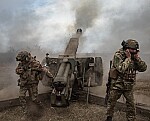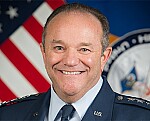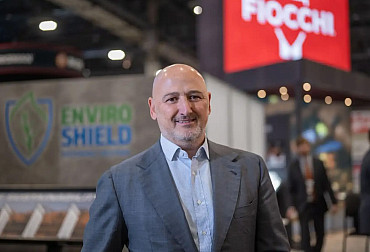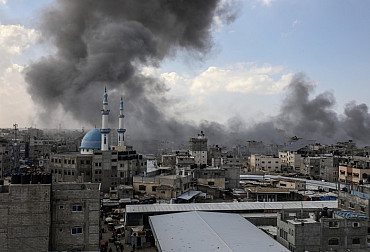Gen. Janusz Adamczak: NATO is stronger and more prepared than ever
NATO is today the only and longest lasting defence alliance, founded in 1949. This year the alliance, which has 32 member states, celebrates 75 years since its creation. In today's uncertain security situation and given the threat of a potential NATO clash with a technologically advanced adversary, the Alliance's importance is all the more important. In this context, we asked Lieutenant General Janusz Adamczak, Director General of the NATO International Military Staff (DGIMS), for an interview.
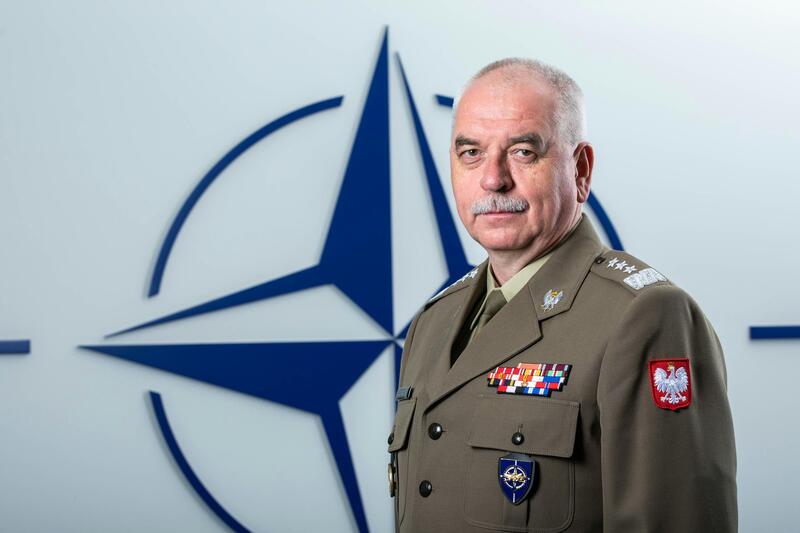
General, where does NATO stand today, 75 years after its founding?
NATO stands stronger and readier than ever. Over the last 75 years, our Alliance has grown to include 19 new members, with Finland being our newest Ally. The strength of NATO is that we have always been able to unite around our core purpose: to defend each other, and keep our people safe. With each round of accessions, new Allies have brought to our Alliance, their own strengths and military capabilities, reinforcing the foundations we built in 1949. Today, NATO Allies represent roughly half of the world's economy and its military might.
Additionally, over the last 7 decades, NATO has been constantly adapting ensuring it is ready and able to face the challenges that come with the changing security environment, technological advancements and evolving threats across different domains. NATO is currently undergoing its most significant transformation to date. Since 2014, we have been undertaking the largest reinforcement of our collective defence in a generation, enhancing our ability to defend all Allies on land, at sea, in the air, in cyber domain, and in space.
Since Russia’s full-scale invasion of Ukraine in February 2022, NATO has further stepped-up its response, bringing 40,000 troops and hundreds of ships and planes under NATO command. We have doubled the number of multinational battlegroups in the east of the Alliance from four to eight, spanning the area from the Baltic Sea to the Black Sea, and we are ready to scaled-up to brigade-size if necessary.
At the Vilnius Summit last July, NATO leaders took further decisions to strengthen our deterrence and defence for the long term, across all domains and against all threats and challenges, in line with our 360-degree approach. Allies agreed the most comprehensive defence plans since the end of the Cold War designed to counter the two main threats to our Alliance: Russia, and Terrorist Groups. To make the plans executable, NATO is putting 300,000 troops on higher readiness, backed by substantial air and naval power. We are also increasing our stockpiles of munitions and equipment, using our well-established NATO Defence Planning Process to provide industry with the long-term demand signal needed to boost production.
All of this sends a clear message to all potential adversaries, that we are willing and ready to protect and defend every inch of Allied territory.
In recent years, NATO has to face completely new geopolitical and security situation in the world. How is or should the Alliance respond to these changes?
For many years, now, NATO and its Allies have been monitoring Russia’s use of violence and intimidation; its attempts to re-establish spheres of influence; its weaponization of migration, food and energy; and its complete disregard for the sovereignty of other nations, using conventional, cyber and hybrid means to destabilise them, and even illegally annex territory. Faced with this pattern of aggressive behaviour, the NATO Military Authorities recognised the need to improve NATO’s collective defence across the Alliance’s territory and domains, and started developing an overarching strategy for both our current and our future collective defence.
In 2019, Allied Chiefs of Defence agreed a new threat-based NATO Military Strategy, which helped to set out NATO’s military priorities and approach to current and future threats in a more unpredictable world as well as deal with the consequences of a changed security environment. This was followed in 2020 by the Concept for the Deterrence and Defence of the Euro-Atlantic Area (DDA): a strategy for the short to medium term that enables Allies to rapidly strengthen NATO’s deterrence and defence posture, in all domains, in a coherent and purpose driven manner to counter two threats, Russia and Terrorist Groups. Subsequently, in 2021, Allied Chiefs of Defence established the NATO Warfighting Capstone Concept (NWCC): a strategy for the long term, which provides a 20-year vision for the development of the Alliance’s Military Instrument-of-Power and sets out a realistic path forward to turn that vision into reality. NATO deliberately developed these two documents almost in parallel to ensure a coherence across planning for the “now” and planning for the future.
It has been interesting to witness first-hand, NATO’s shift of focus from “crisis management”, back to collective defence. From the development of the Military Strategy and subsequent concepts, as Polish Military Representative to NATO, and now as Director General of the NATO International Military Staff, I am able to see the operationalisation of these plans for peacetime, times of crisis and times of conflict. This included the revision of the Alliance’s Graduated Response Plans and the development of a new Family of Plans.
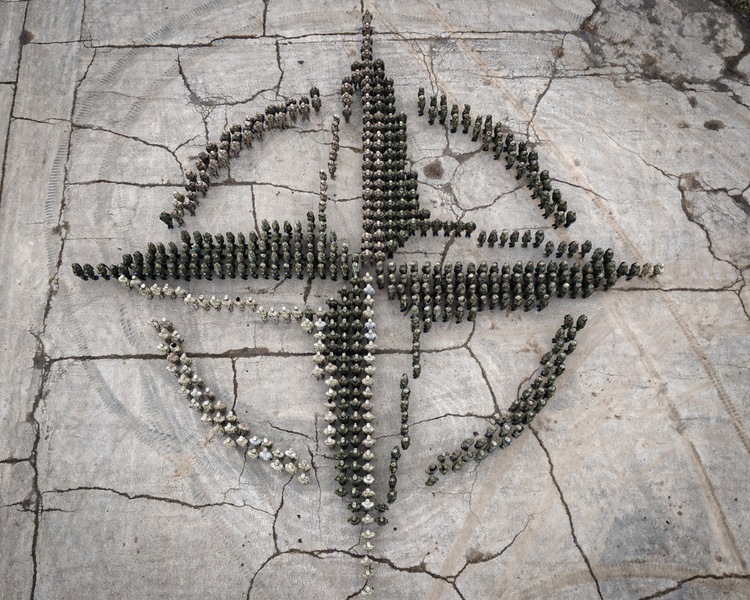
In your view, has the Alliance faced more serious threats in its history than it is facing today?
NATO will be celebrating its 75th Anniversary this year. If you were to compare NATO at its inception and today, you would see how our organisation has evolved to reflect the fundamental changes that have occurred in our societies, but also the changes in our security environment.
Over the last 7 decades, the world has become a more dangerous place and the number of threats we have to contend with is on the rise, such as global competition, emerging and disrupting technologies, growing conflict in Ukraine, Africa and the Middle East. Unsurprisingly, last year, the United Nations stated that the world had entered into a new era of violence and conflict. The Institute for Economics and Peace stated in its annual Global Peace Index that the number of countries involved in external conflict had risen from 58 in 2008 to 91 in 2022.
It used to be that we knew exactly where a threat was coming from and even – dare I say – what to expect. However, today, we have to be ready for any kind of attack, in any domain, in any geographical area, at any time. This requires our Alliance to re-think warfighting and warfare development in the short, medium and long term to maintain its military credibility.
This is why, the NWCC and the DDA provide the conceptual and operational frameworks for the Alliance’s multi-domain operations. Both Concepts were developed to be complementary and aim to ensure that the Military Instrument-of-Power remains relevant and meets the requirements of the Alliance, now and in the future. The DDA through its work strands, namely the planning and force model, sets the foundation for a multi-domain architecture in peace, crisis and conflict. While the NWCC offers mechanisms for the comprehensive developments required to achieve future military capabilities.
How do you see the importance of the membership of the Central European and Baltic States in the Alliance?
Over the last 75 years, NATO’s family has grown to include 32 democracies across Europe and North America. A family that, especially in the last few decades, has become stronger, more capable, and more resilient, that is in part thanks to the unique qualities that our Central European and Baltic members have brought to our Alliance. In their own unique way, every one of our Allies helps to reinforce and uphold NATO’s defensive shield. Embodying the undeniable truth that we are stronger and safer together than we are alone.
Poland has historically had bad experiences with Russia. Is there anything that Poland could pass on to the other NATO countries as part of this experience?
Poland and many other Allies have shown that collective defence starts at home. When talking about NATO’s collective defence, Article 5 usually springs to mind but the truth is that Article 3, which focuses on national preparedness and resilience, is just as important. Having a strong national defence is a key part of being able to contribute to international defence. In a “one for all, all for one’” organisation, you have to work on the “one” and on the “all” at the same time.
Poland is making major defence investments, including the purchase of fifth-generation aircraft, attack helicopters, tanks, artillery and rocket systems, ships, submarines, as well as air and missile defence capabilities. In total, Poland regularly spends well over the agreed 2% GDP on defence, intending to continue this trend in the upcoming years. Again, a strong national security is an essential pillar of our collective security.
How do you see the role of the USA in the Alliance?
As a founding member of NATO, the US has taken on a leading role within our Alliance and has always demonstrated a strong commitment to allied security. US leadership is as important as ever in an unpredictable world and a strong NATO is good for North America and good for Europe. As I already mentioned, together, NATO Allies represent almost one billion people, half of the world’s economic might and half of the world’s military might. We need this collective strength to deal with the many threats and challenges we face, including Russia, terrorism, cyber and missile threats, and a shift in the global balance of power with the rise of China.
In the past years, we have seen an increase of US presence in Europe, including on the Eastern Flank. We have seen more US exercises, and more naval and air presence. The US is the framework Nation for our multinational battlegroup in Poland. The US regularly participates in Bomber Task Force Europe operations, routinely conducted across the European continent. This contributes to NATO’s unique ability to rapidly field and deploy strategic forces at any time and commitment to deterring adversary aggression towards the Alliance. The US is also the Ally offering the greatest support to Ukraine. The US’ leadership in NATO and in the international community is essential to the maintenance of a rules-based international order and to upholding our core values.
Today, 2% of GDP for the defence of individual member states is the basis for the successful and effective functioning of the Alliance. In your opinion, should individual member states invest even more in their defence? How do you see the position of the Czech Republic in this context?
We can always do more when it comes to defence spending but we have come a long way since Allied Leaders agreed to the Pledge at the Wales Summit in 2014. Our latest estimates show that defence expenditure by European Allies and Canada has increased by 8.3% in 2023. This is the biggest increase in decades. Since 2014, Allies will have invested an extra $450 billion dollars in defence. Allies are also investing more in modern capabilities, and contributing to NATO deployments and exercises. At the Vilnius Summit, all Allies, agreed to make 2% pledge the floor for defence spending and no longer the ceiling. Currently, 11 NATO Allies are meeting this baseline, but many more have pledged to reach it in coming years, including Czechia. We welcome the recent announcement by President Pavel, in his New Year’s address, that Czechia aims to reach 2% of GDP this year. This means more funds to potentially finance new capabilities, procurement of weapons systems, and the facilities we need for reinforcement, more training and exercises, command and control, and engagement with partners. In a more dangerous and competitive world, NATO Allies must continue to invest more and invest more together in NATO.
In your opinion, should NATO continue to expand to include more states or should it rather focus on increasing the defence mechanisms of the current alliance? Isn't it appropriate to build stronger defence structures mainly on the eastern border of the Alliance?
I don’t like to look at it from the perspective of an expansion. NATO is and has always been an Alliance of like-minded Nations dedicated to upholding our fundamental values through global solidarity. This has in turn helped foster peace, stability and security for the Nations who have chosen to join our Alliance. Because it is a choice. Just as a nation freely chooses to join NATO and NATO chooses to accept them if they meet the strict political, economic and military criteria. Additionally, as I mentioned earlier, each new Ally brings its own military capacity and capability to reinforce our Alliance.
Welcoming Finland last year and Sweden this year has not impeded or waylaid our efforts to strengthen our collective defence. We have been reinforcing our forward defences and enhancing our battlegroups in the eastern part of the Alliance up to brigade level. We are transforming and increasing the number of high readiness forces to well over 300,000. NATO is also boosting its ability to reinforce, including with more pre-positioned equipment, more forward-deployed capabilities, like air defence, and strengthened command and control. This means we can be even more agile in crisis or conflict.
Already now we can observe some problems in the voting of NATO member states, where the unanimous consent of all members is valid. Will this problem not be exacerbated with more members, in the sense that even a single state can block an otherwise unambiguous decision by all the other members of the Alliance?
NATO was founded on common values of individual liberty, democracy, and the rule of law. And we are an Alliance of 32 democracies with different geography, history and political parties. We should not be surprised that there are sometimes strong disagreements in – and among – our countries. Diverse views and debate are an essential part of our democracies. And open debate among NATO Allies is not a sign of weakness, it is a sign of strength. Despite our differences, we have always been able to unite around our core task, to defend and protect each other. That commitment to collective defence was at the heart of NATO when it was founded, and it is at the heart of our Alliance today. When we reach a decision by consensus, we do so together, which makes every decision even more powerful as it represents the united voice and will of 32 Nations, roughly half of the world’s military and economic might.
In your opinion, should NATO member countries be more active in building up their own defence industries and less reliant on imports from distant countries?
In response to Russia’s war in Ukraine, NATO and EU Member States have been discussing ways to reduce ongoing energy, trade and economic dependencies on other authoritarian regimes, such as Russia and China. This is not about stopping trade, but we need to be aware of our dependencies, to reduce our vulnerabilities and to manage the risks. This is especially true for our national defence industries, especially as many Allies have significantly depleted their stocks in order to support Ukraine. Now, we must work closely with industry to ramp up our arms production to meet Ukraine’s needs, but also to replenish allied stockpiles. This is vital to strengthening our own deterrence and defence.
Additionally, NATO needs to work closely with industry as we navigate a world shaped by emerging and disruptive technologies. Technologies like artificial intelligence, autonomous systems, biotech and quantum are changing the character of conflict as much as the Industrial Revolution. So we must constantly sharpen our technological edge by developing and adopting new technologies; cooperating with the private sector; shaping global standards; and embedding principles of responsible use that our democratic values enshrine.
In the context of the conflict in Ukraine, the supply of Western weapons has shown that, for example, 155 mm calibre ammunition is not 100% compatible with all weapon systems of this calibre. Is the Alliance considering a deeper standardisation of the armaments and ammunition of individual member states in the future?
With the current shortfalls in production capacity, there is a clear need for more standardisation. We need it and we need it fast. Because not only does standardisation lead to more interoperability. It also leads to more joint procurement, which in turn creates the effectiveness the current security climate calls for and the long-term demand signal that the industry wants. The key therefore is to not only implement existing NATO standards to a higher extent, but to also adopt more non-NATO standards, through closer cooperation with industry and standards developing organisations. We need to involve companies more directly in the standards development process. As early as possible. This is a two way street. Government should reach out to industry. And industry should actively look for opportunities to promote technical standards to NATO’s expert groups, through increased engagement with National government representatives. Adopting civil standards - especially for new and emerging technologies - will shorten the timeframe to establish new standards.
NATO is not directly involved in military operations in Ukraine, but individual member states coordinate material assistance to Ukraine and training of Ukrainian soldiers. How does this coordination take place?
More than 50 countries, including all 32 NATO Allies, have been supporting Ukraine’s most urgent needs, including air defence, through the US-led Ukraine Defence Contact Group. Additionally, NATO set out a clear vision for Ukraine’s future, with a package consisting of three elements. First, Allied Leaders agreed a multi-year programme of assistance to help Ukraine transition from Soviet-era to NATO equipment and standards and make their forces fully interoperable with NATO. Second, NATO has upgraded its political ties with Ukraine, by setting up the NATO-Ukraine Council. This is a platform for crisis consultation and decision-making, where Allies and Ukraine sit as equals to tackle shared security concerns. Third, Allies addressed Ukraine’s membership aspirations and agreed to remove the requirement for a Membership Action Plan. This will change Ukraine’s membership path from a two-step process to a one-step process. When Ukraine fulfils the conditions, then Allies will issue an invitation for the country to join the Alliance. This is a strong package for Ukraine and a clear path towards its membership in NATO.
NATO is today the world's only and longest-standing defence alliance. What capabilities do you think it should continue to develop in order to maintain this status in the future?
For almost 75 years, NATO has always adapted to changing security situations to sustain an operational advantage. In an era of multi-domain and 360° threats, NATO must have the capacity and capabilities to act decisively at any time, in any domain, in every geographic area.
In this new era of collective defence, leaders from the military, from industry and from academia need to work side by side to harness innovation for the good of the Alliance. The Defence Innovation Accelerator for NATO (DIANA) network will concentrate on emerging and disruptive technologies that NATO has identified as priorities, including artificial intelligence, big-data processing, quantum-enabled technologies, autonomy, biotechnology, novel materials and space. In June 2023, NATO launched the first call for proposals to develop dual-use technologies to solve problems in three areas: energy resilience, sensing and surveillance, and secure information sharing. Embracing technology can only enhance our effectiveness and make our Alliance stronger, faster and smarter. Additionally, we will work to fully incorporate space and cyberspace capabilities and threats into our military planning and develop the ability to, not only, fuse information from all domains and environments, but also optimise multi-domain activity between military and non-military actors towards a unified outcome. The results of this coordinated approach across the five operational domains will further sharpen the physical, virtual and cognitive effects dimensions.
NATO is undergoing unprecedented change at an unprecedented pace. But our resolve to protect the one billion citizens that live on Allied soil remains unwavering. Every day, we build on the strong ties between Allies and harvest the centuries of military expertise that we all possess. As a defensive Alliance, NATO continues to send an unmistakable message to any potential aggressor: We are united. We are resolute. But above all, we are stronger together.



